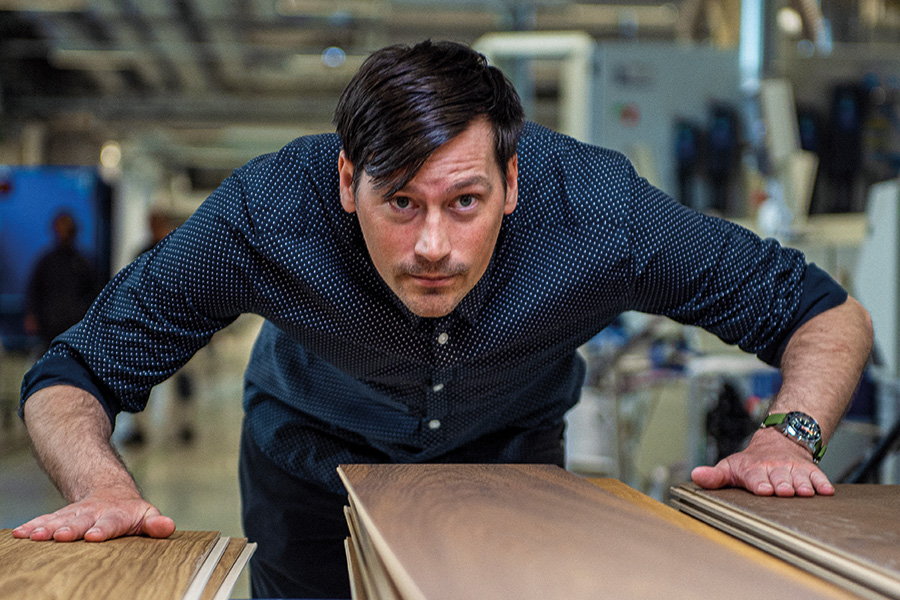Emanuel Lidberg talks about where his design inspiration comes from and how hardened
wood flooring allows him the freedom to express maximum creativity.
MY design philosophy is to create products that will last a very long time. This isn’t just a reference to the durability and longevity of the product – although with Bjelin’s Woodura hardened wood, for example, has these features, it also it refers to the design aspect as well.
If a designer creates an on-trend product for the consumer to install today but will look dated in five years’ time, then arguably the designer hasn’t done his or her job properly. The lifetime of the product should be at least 20-25 years.
We don’t operate in a market where we’ve the most-trendy, fast-moving products, but we try to go for classic designs that use the raw material and enhance its natural characteristics when it comes to pigments and the coloration of the product, so you can experience the real wood underneath. If you just paint over the wood, you can say today this is a great colour, but in two years it will be out of fashion. That’s not a sustainable approach. We try to design products that work well where they’re installed for a very long time.
Before working for Välinge Innovation, the sister company to Bjelin, I worked at the well-known Swedish hardwood company Kährs as design manager for five years, so I’m experienced when it comes to product design and development in this market.
Where do I get my inspiration from?
Trade shows? No, not really. I sometimes visit Domotex, Europe’s biggest flooring show, but this year I didn’t attend.
It’s interesting to go to these shows to see what your competitors are doing, but from a design point of view, if you’re looking at trends at a tradeshow, you’re already too late.
You have to look way back to see trends developing. There have been design trends which the gaming community for example have adopted, then designers get hold of them, and the early adopters pick them up. They then get transferred into more fast-moving goods and the bigger brands then start to use them. By the time that trend is appearing on commodity products which you can buy in the supermarket, you know it’s too late to react. We must look at it when it’s at the early adopter phase, to see if it’s something we need to react to for our product development.
One example is if you look at the rising interest in patterned flooring like chevron and herringbone. The interest in patterns started to grow about 10 years ago, at the same time the electronics and textiles sector started to develop more patterned designs. That took a couple of years and then we saw a rise in interest in patterned flooring, but it was a delay of 8-10 years. Now they’re popular in the flooring industry. That’s a good example of where you can see cause and effect developing from fast-moving goods to interior design. It also indicates the cyclical nature of trends, as we’ve seen this before with herringbone back in the 1920s and the Dutch patterns of the 1950s and 1960s.
The design possibilities offered by Woodura hardened wood by Bjelin, for example includes lacquered products which are rated for heavy commercial use and brushed lacquer which gives you a more tactile feeling of the wood, because it presents the visual effect of the grain in a totally different way.
So, if you have an all-natural product, that will be a more pleasing environment for you, not to mention of course that LVT is based on fossil fuel resources, compared to wood which is a carbon trap if you use it as a long-life product.
The same goes for tiles which are also sometimes designed to emulate real wood, but with these tiles you will see a pattern repeating all over. To me nothing can beat the real thing as real wood has so much positive in-built quality perception from the consumer. The feel is also different because real wood feels warm and comfortable.
www.bjelin.com
Emanuel Lidberg is head of design at Välinge Innovation


